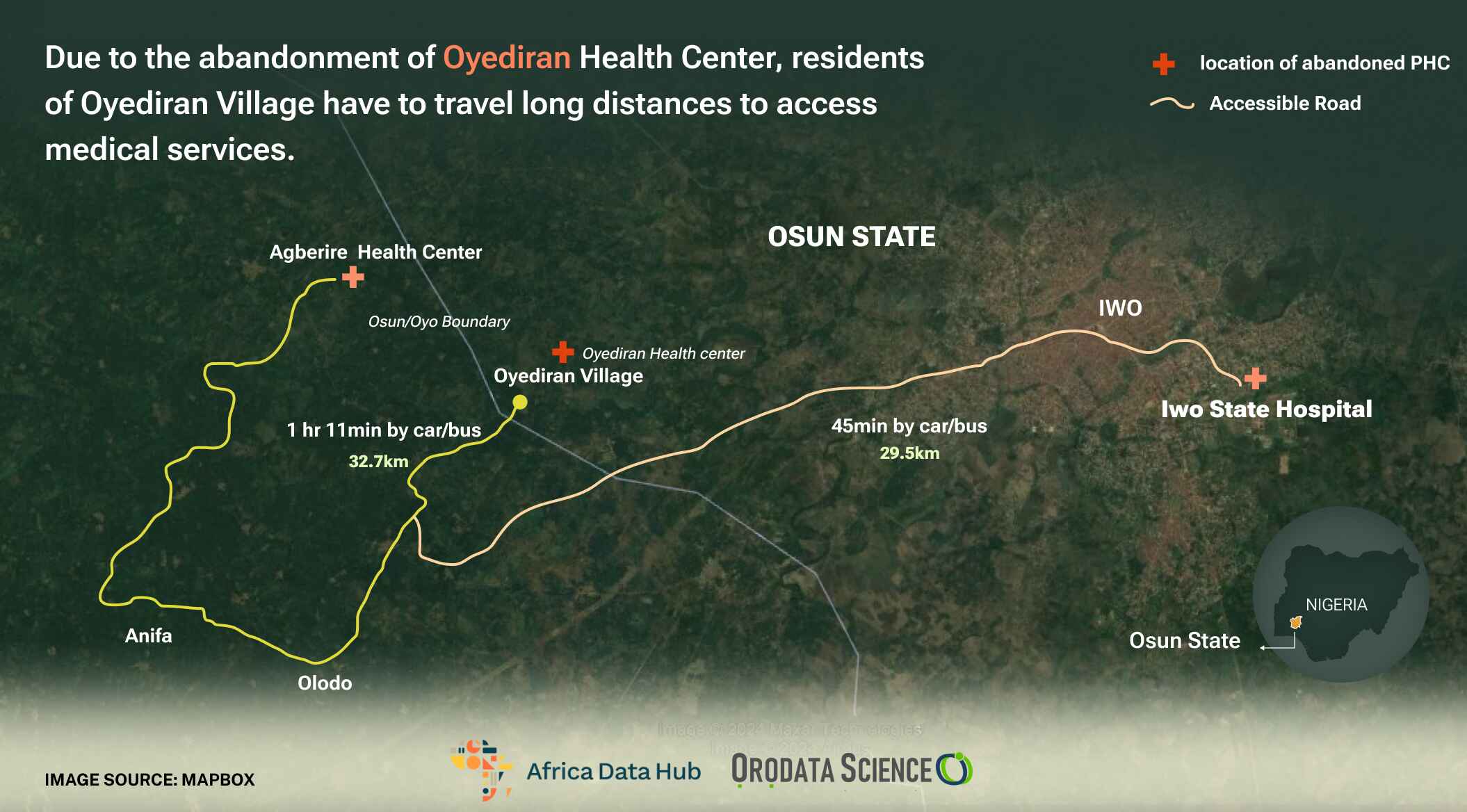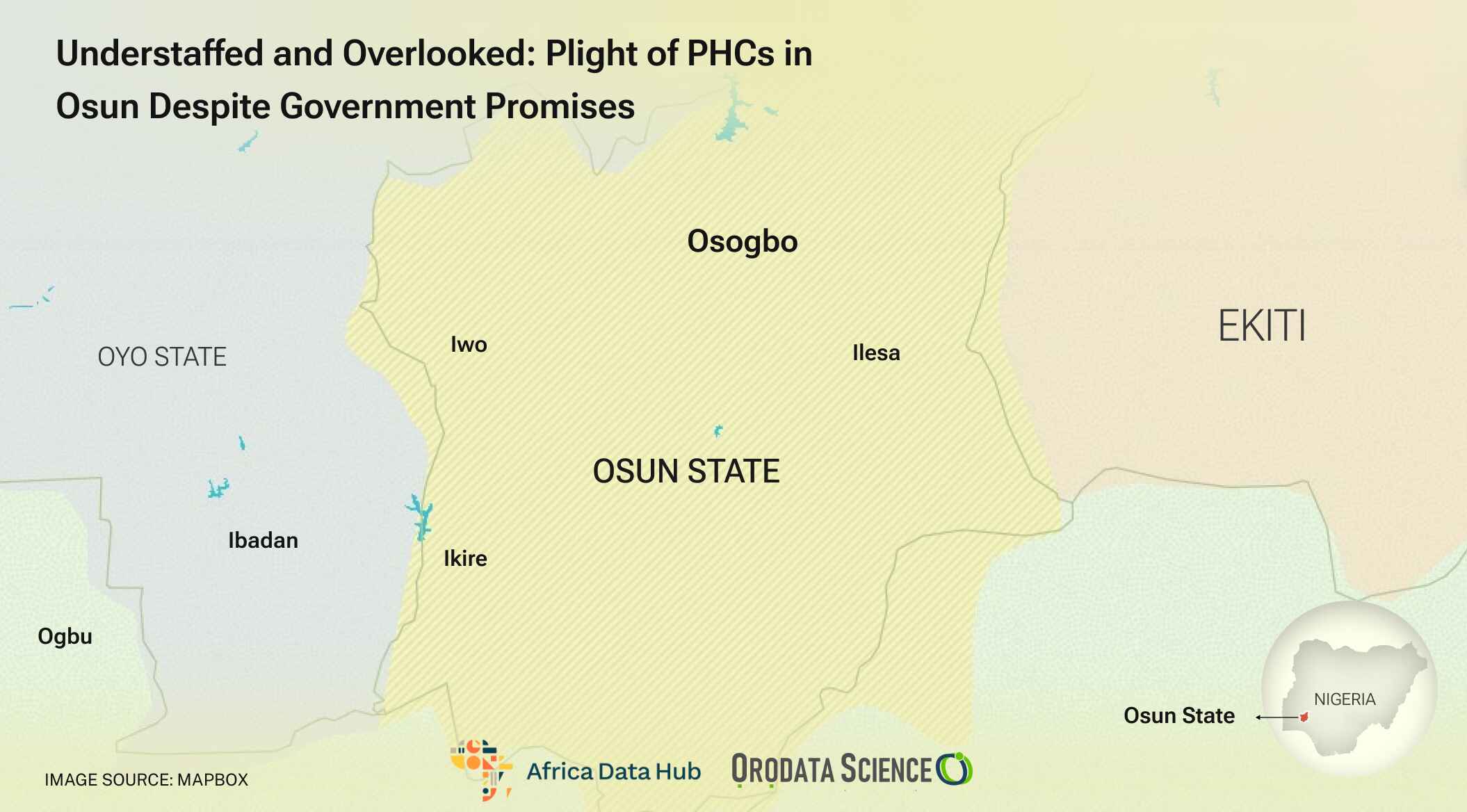The Crisis of Understaffed PHCs in Osun: Government Promises Unfulfilled
Uche Oti
5 min read . Jul 9, 2024
In December 2023, the Osun State Governor, Ademola Adeleke, said his administration is creating an enabling environment to retain health professionals in the state and that efforts are in top gear to stop the exodus of health workers to other countries in search of greener pastures.
This pledge, however, seems not to target health workers at the Primary Health Care(PHC) level as they complain of the unpleasant working conditions they operate in.
These unpleasant working conditions and the limited availability of health workers posted to PHCs have left the PHCs at the mercy of Community Health Extension Workers (CHEW).
According to the National Primary Health Care Development Agency (NHPCDA), the minimum standards for PHCs in Nigeria should include a minimum of 10 staff which include a doctor, nurse/midwives, Community Health Officer, CHEW, pharmacy technician, Junior CHEW, Environmental officer, medical records officer, and laboratory technician.
This was also corroborated by the Lagos State Health Facilities Monitoring and Accreditation Agency (HEFAMAA), stating that the minimum requirements are essential to enable the PHCs to deliver some of its services which include but are not limited to Maternal and Child Health; Adolescent Health; Men Health; Care of the Elderly; Life Saving Services including minor operations; Treatment of minor ailments (e.g. malaria); among others.
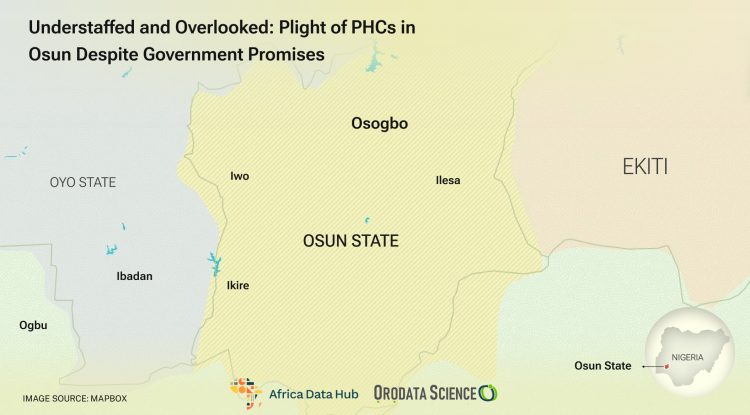
However, a recent data collection exercise through the Orodata Frontline Investigative Program in PHCs across different LGAs in Osun State revealed the non-posting of health workers and the sheer absence of a few health workers attached to the PHCs.
Among the PHCs visited, the Eripa Maternity Health Center in Boluwaduro LGA and Popo Oluponna PHC in Ayedire LGA have the highest number of health workers assigned to them, which is 9 health workers. However, there are only 4 health workers actively practising in the facilities, and none of the two PHCs have a visiting doctor assigned to them.
PHCs with the least number of assigned health workers among the PHCs visited were Akinlalu PHC in Ife North LGA, Aladodo PHC and Ajebamidele PHC in Atakumosa East LGA with two (2) health workers in each PHC. Of the three LGAs with two assigned health workers, no health workers actively present within the facility to provide the relevant healthcare services for community members.
Other PHCs have an average of 4 health workers assigned with about two actively practising within the facilities.
Among the twelve facilities visited by this reporter, the Police Clinic in Iragbiji, Boripe LGA is the only facility that has recorded the deployment of a health worker within the last year, while the others have not had health workers posted there in about three, five, seven and nine years.
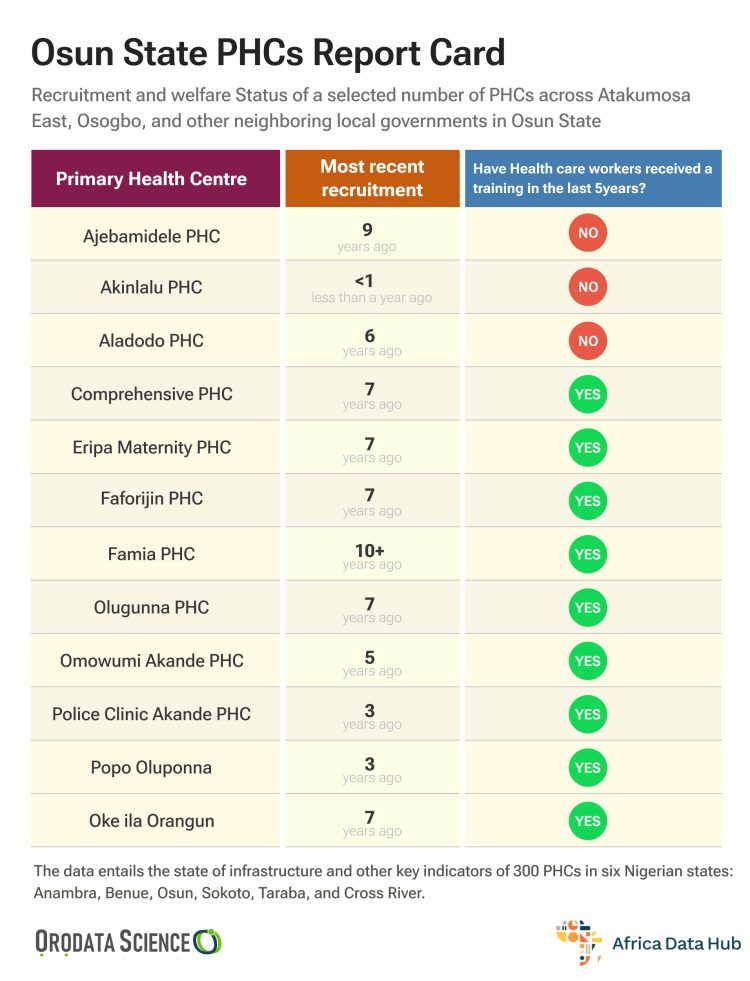
Not even one single health worker in all the facilities where health workers were available confirmed that they were satisfied with their working conditions, and they would rather not complain as there were no standard systems in place to address staff grievances or concerns. None of the staff members also acknowledged the existence of a mechanism for recognizing and rewarding staff members’ efforts.
Six of the nine PHCs confirmed that staff have received at least one training from the NPHCDA and/or Osun State Ministry of Health in the last five years.
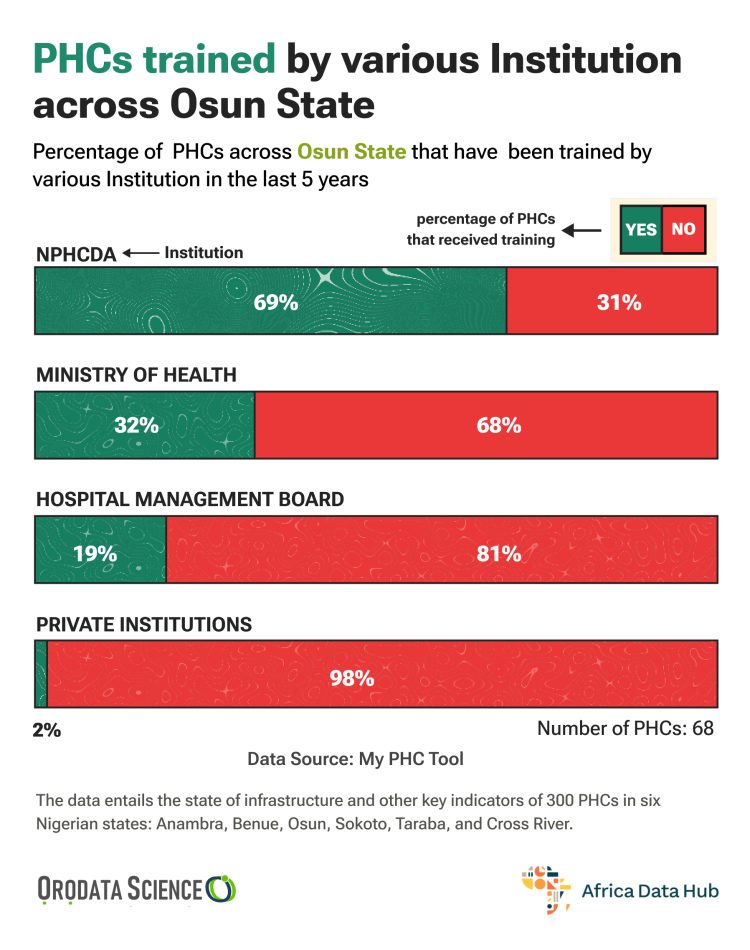
Speaking about the limited availability of health workers in most of the PHCs visited, Olympus Adebanjo, a Public Health expert explained that the inadequate number of staff in PHCs in Osun is quite similar to other PHCs across the country as PHCs suffer a multiplex of problems that culminates in poor governance.
Adebanjo explained that “PHCs are constitutionally the responsibility of local government authorities. However, the lack of financial wherewithal and poor accountability incapacitates LGAs to recruit more staff. And that’s where the state government comes in, primary healthcare is scarcely prioritized by the state governments because it’s considered too basic to score cheap political points.
“At the national level, there is a major concern with the shrinking human resource from rural areas to urban areas, and from Nigeria to more developed countries. This naturally affects the number of staff in PHCs across Nigeria, especially in rural parts of Osun state.”
To address this, Adebanjo recommended that “the government must balance their need for popularity with their need to leave strong legacies. I argue that health indices such as maternal and child survival, emergency management and improved out-of-pocket spending are greater legacies than needless bridges and other government inefficiencies. So we must prioritize health.
“We must invest more in health worker production as well as incentivise health workers to work in less-urban settings. Incentives such as security, housing, road connectivity, among others will help retention.”
The public health expert added that it is important to embrace technology in managing human resources for health as it would help to optimize training investments across the country.
Regarding the insufficient training of health workers, Adebanjo explained that the NPHCDA and state primary healthcare boards that are statutorily obligated to monitor and improve the standards of service delivery across the country should ensure that needs-based trainings are organized for health workers.
He stated that “until Nigeria adopts the NHS system as applicable in the UK where the management of human resources is digital and their training needs leverage’s technology such as artificial intelligence, there will continue to be capacity deficit in our PHC human resources.”
This story was produced for the Frontline Investigative Program and supported by the Africa Data Hub and Orodata Science.”
Related Posts
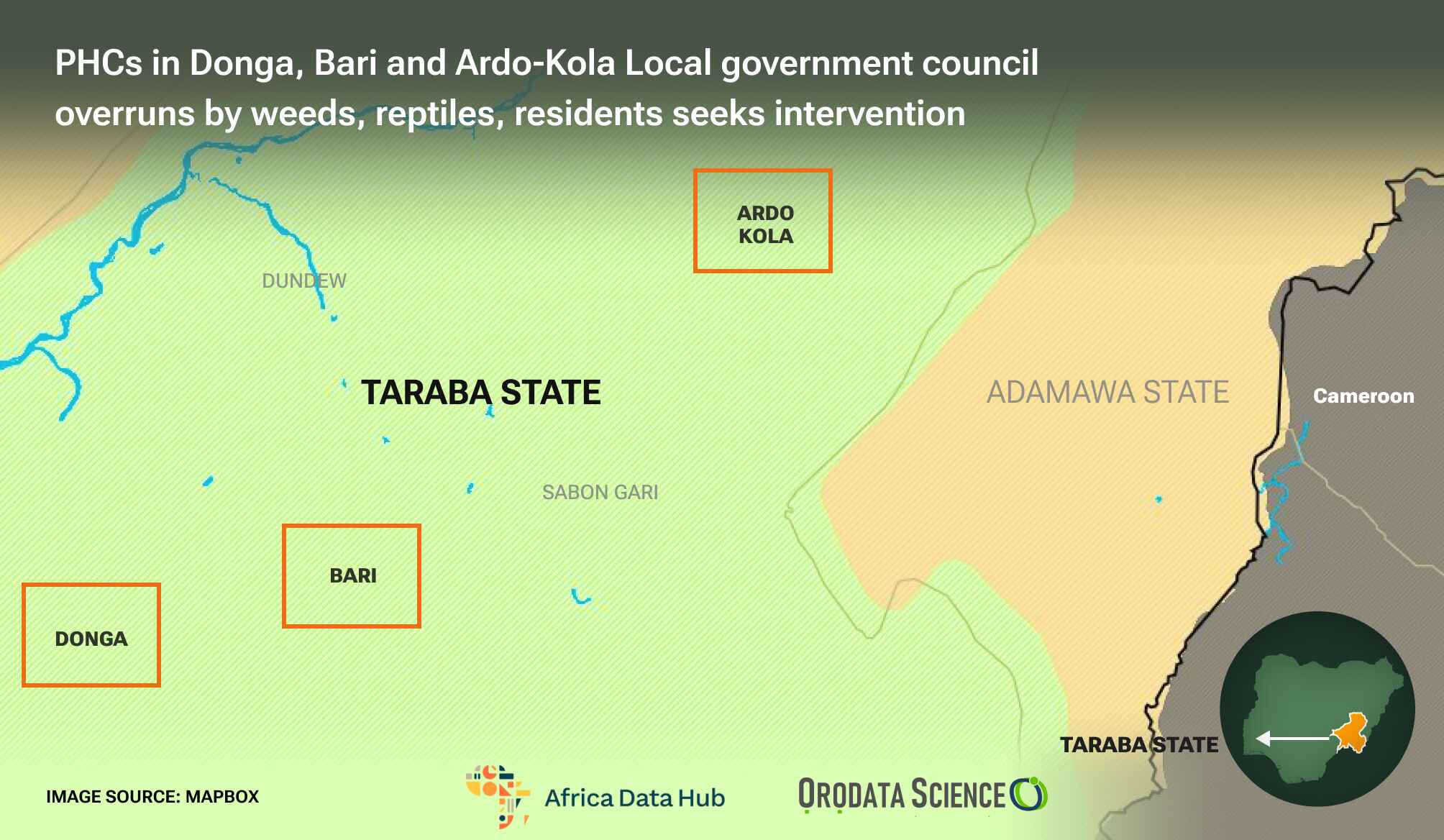
Taraba Primary Health Centers Overrun: Residents Appeal for Urgent Intervention Against Weeds and Reptiles
Jul 8, 2024
5 min read
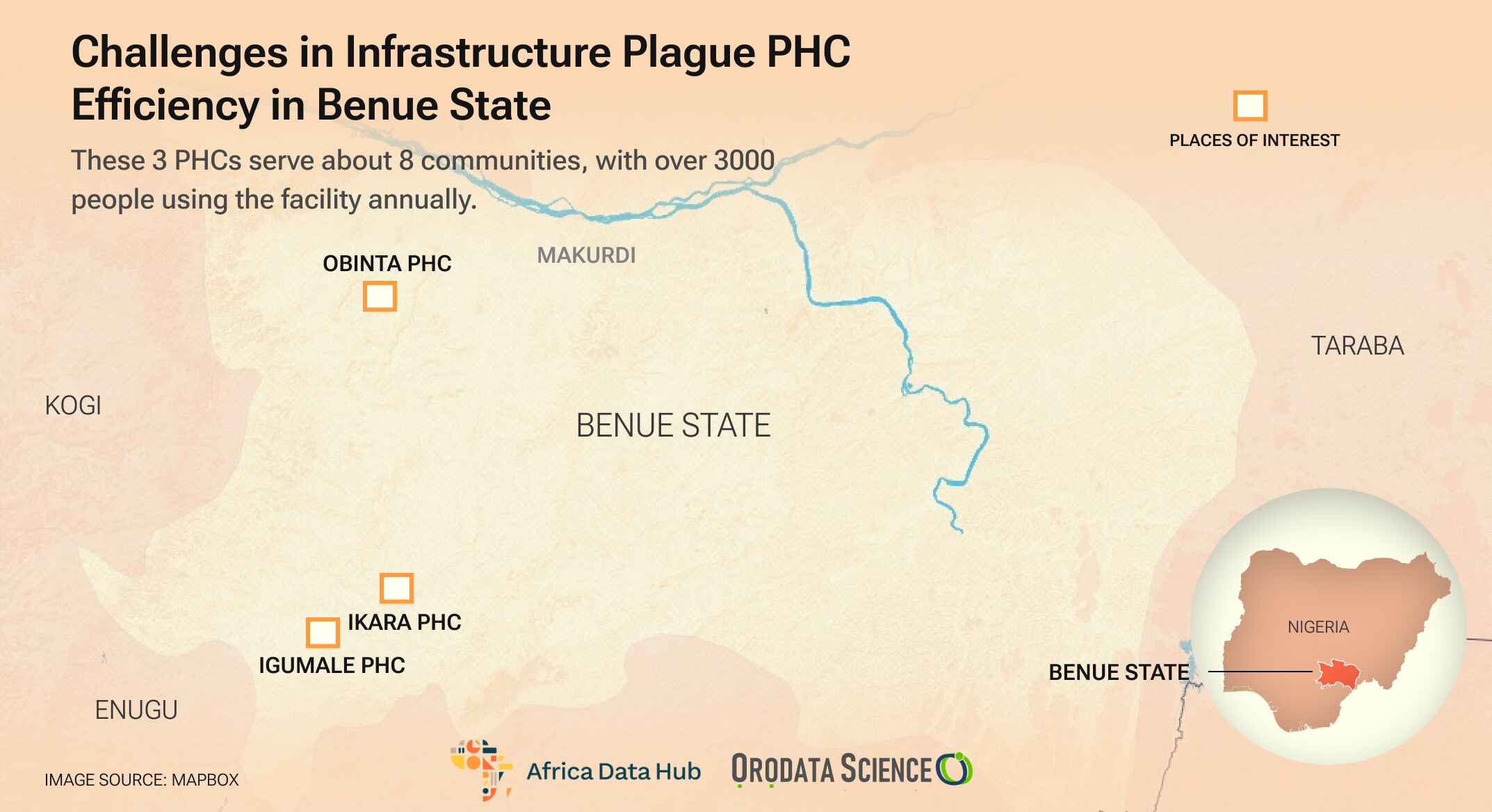
Overcoming Infrastructural Challenges: Enhancing Primary Health Care in Benue State
Jul 8, 2024
6 min read
